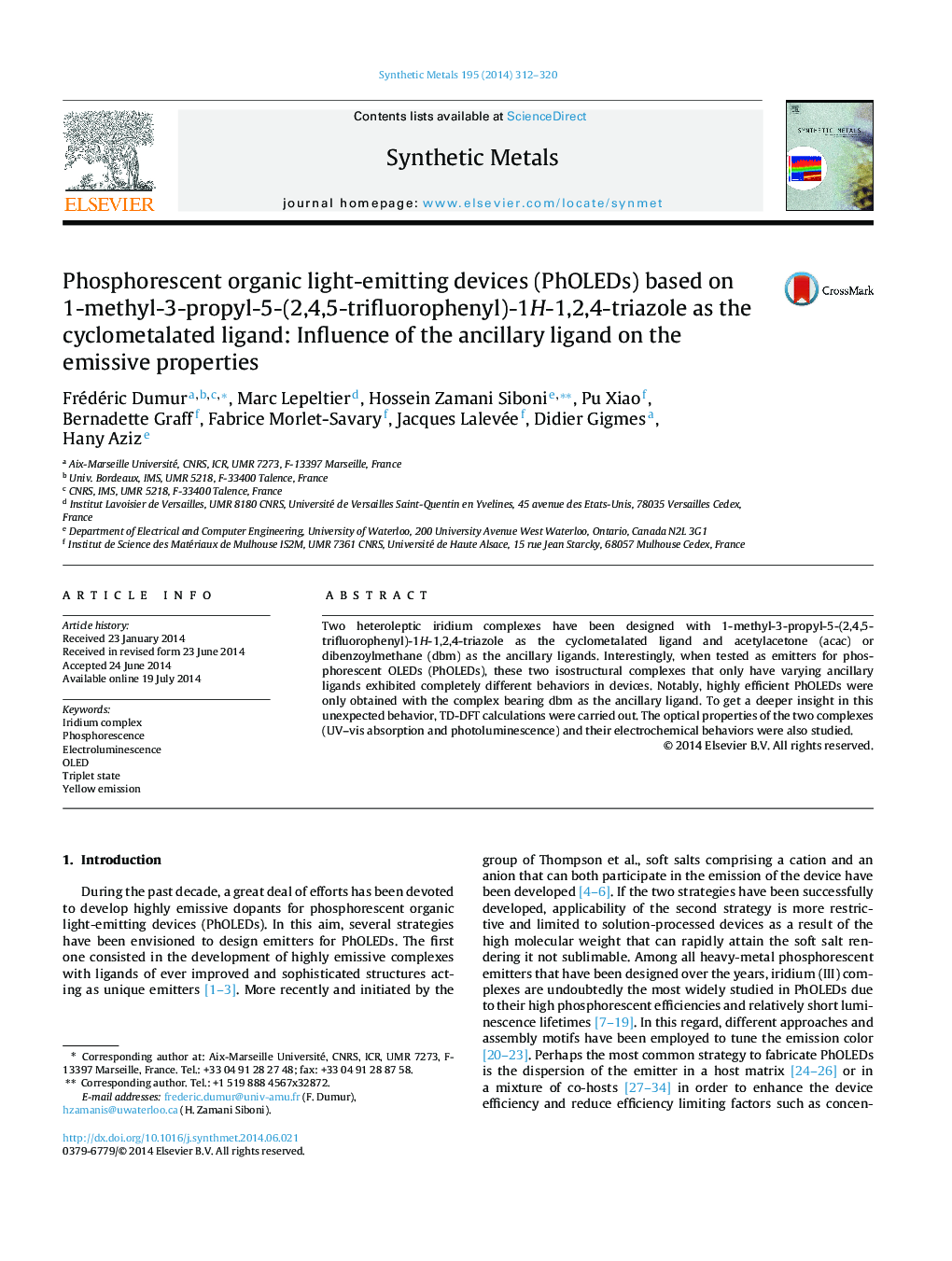| Article ID | Journal | Published Year | Pages | File Type |
|---|---|---|---|---|
| 1440960 | Synthetic Metals | 2014 | 9 Pages |
•Two new neutral iridium complexes have been tested as emitters.•TD-DFT calculations and electrochemical measurements were carried out.•UV–vis absorption and photoluminescence spectroscopy were investigated.•These emitters belong to a family of complex that has not been investigated yet.•Blue and yellow OLEDs were obtained.
Two heteroleptic iridium complexes have been designed with 1-methyl-3-propyl-5-(2,4,5-trifluorophenyl)-1H-1,2,4-triazole as the cyclometalated ligand and acetylacetone (acac) or dibenzoylmethane (dbm) as the ancillary ligands. Interestingly, when tested as emitters for phosphorescent OLEDs (PhOLEDs), these two isostructural complexes that only have varying ancillary ligands exhibited completely different behaviors in devices. Notably, highly efficient PhOLEDs were only obtained with the complex bearing dbm as the ancillary ligand. To get a deeper insight in this unexpected behavior, TD-DFT calculations were carried out. The optical properties of the two complexes (UV–vis absorption and photoluminescence) and their electrochemical behaviors were also studied.
Graphical abstractFigure optionsDownload full-size imageDownload as PowerPoint slide
